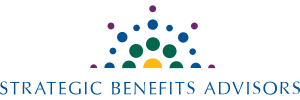Every year, around 3.8 million people in the United States turn 651 — the traditional age of retirement. How can plan sponsors help workers get ready for retirement? Offering a retirement readiness program that considers employees’ emotional, financial and healthcare needs can go a long way toward helping them prepare.
Emotional Needs
After decades of working, the sudden transition to retirement can be difficult. One way to ease the transition is to offer phased retirement where employees’ hours are reduced over time. For example, an employee might transition from full-time employment to 80% employment, then scale down to 60% employment. This phased-in approach to retirement can extend over months or years. Another option is to allow employees to return to work after retirement on a contract or part-time basis, either for a limited time (e.g., to support a special project) or on an ongoing seasonal or reduced schedule.
Workforce planning can help employers decide whether to offer such programs based on forecasted talent gaps or surpluses. For example, as a population with a scarce or highly valued skillset approaches retirement, offering phased retirement or re-employment could help retain key talent longer. Conversely, if the population approaching retirement represents a skillset of waning organizational relevance, the employer might want to focus on ways to accelerate the group’s retirement readiness.
Plan sponsors must evaluate benefits programs to determine whether existing plans support phased retirement or re-employment. For example, plan documents may require employees to work a minimum number of hours per week to retain healthcare or retirement benefits. A waiting period may be required between retirement and re-employment. Employers need to ensure benefit plans support their desired policies to avoid any unwanted consequences, such as impermissible in-service distributions from retirement plans.
Financial Needs
A critical element of retirement readiness is understanding one’s financial needs. Retirement modeling tools or calculators can help employees determine how much they need to save by their target retirement date — and where they stand today. Some calculators estimate retirement income from a single source, such as a 401(k) plan, while more robust calculators can help evaluate all sources of retirement income, including Social Security and benefits earned by a spouse. Calculators can help employees understand their projected income needs and how their lump-sum savings convert to annuity payments at different retirement ages, making them more confident about their ability to retire.
In addition to self-service tools, some employers offer access to financial planning services that may be company-subsidized or available to employees at a discount. 401(k) recordkeepers may also provide access to financial planning services.
Employers can help employees get ready for retirement by communicating ways to maximize retirement savings throughout their careers. For example, targeted communications can alert 401(k) participants if they are contributing less than the amount required to get the full employer match, contributing less than the IRS maximum annual deferral limit or not taking advantage of catch-up contributions available at age 50 and over. Employers whose plans allow both Roth and pre-tax 401(k) contributions can offer education to help employees decide which option is best for them. Executives and other highly-compensated employees may require separate communications about the nonqualified retirement benefits available to them.
Plan sponsors can also promote the company’s non-retirement-specific wealth-building programs — for instance, profit-sharing or employee stock purchase programs — as tools for supplementing retirement savings. Finally, employees need to understand the rules surrounding Social Security benefits and how their benefit amounts will change depending on their commencement age and other factors.
Healthcare Needs
As people age, their healthcare needs tend to increase — making the rising cost of healthcare a chief concern. Fortunately, there are strategies for defraying these costs. Many companies offer high-deductible health plans that come with coordinating Health Savings Accounts (HSAs). HSAs, which offer triple-tax savings (contributions are tax-deductible, accounts earn interest tax-free, and funds can be withdrawn tax-free for qualified medical expenses), can be a useful retirement readiness tool. Employees age 55 and over can put extra contributions into an HSA. And after age 65, HSA dollars can even be withdrawn for purposes other than qualified medical expenses, though they will be subject to income tax.
A complete retirement readiness program should include education about employees’ options for medical care during retirement. Employees need to understand the rules under Medicare and choices available to them, such as Medicare Medical Savings Account (MSA) plans. Post-65 retirees have options for supplementing their Medicare insurance through Healthcare.gov or private retiree health medical exchanges. Employers who offer retiree medical plans, Health Reimbursement Arrangements (HRAs),and/or access to long-term care insurance will want to educate employees on how to best utilize these programs to meet their healthcare needs in retirement.
Those who choose to retire close to age 65 can elect to use COBRA to bridge the insurance “gap” between employer-sponsored health care and Medicare for a limited period of time. Early retirees can consider marketplace options through Healthcare.gov or cost-sharing programs that allow participants to pool money to cover each other’s medical expenses. Health cost modeling tools can help employees estimate their medical costs based on age, income, health, location and other factors.
How to Get Started
Regardless of the specific retirement readiness program design, education will play a critical role in ensuring its success. Education will help employees understand their retirement needs, what they should be doing to prepare and how the company will support them. The content can be delivered in a variety of formats ranging from self-study documents posted on the company website to live seminars at each job site. One-on-one meetings or specialized education may be offered when situations are more complex.
The needs of each plan sponsor will vary according to its unique culture and workforce demographics. An independent benefits consultant with experience in the retirement readiness field can help design a holistic program to create win-win outcomes for both the company and its employees.
[1] https://www.pewresearch.org/fact-tank/2019/07/24/baby-boomers-us-labor-force/

